
Product test
iPhone 17 Pro review: a no-nonsense upgrade
by Samuel Buchmann
Mara is an African company that just brought a new smartphone to market. I had to acquire and test it. The Mara Z cuts a surprisingly good figure at an equally surprising price.
The Mara Z is Mara's flagship. With a 5.7-inch screen at 720x1440 pixels, a 13 megapixel camera at the front and one at the back, a micro-USB adapter and a Qualcomm Snapdragon 435 and 3075 mAh battery, the Mara Z marks an important step in the smartphone world.
Because the Mara Z isn't from the USA, or even from China.
The Mara Z is the first African smartphone.
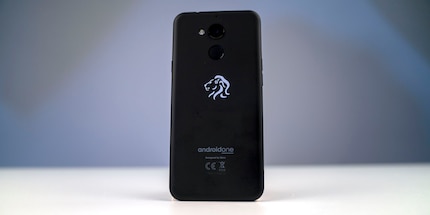
The Mara Z is proof that society, politics and their development cannot be separated from technology. Because even without flagship specs – let's face it, the Mara is far from that – the Mara does more than even the latest Samsung Galaxy S. Or the latest iPhone. To understand the Swiss Mara model and its use, we need to take a step back and take a superficial look at the economic situation in Africa and the market this new phone is entering. If that doesn't interest you, then just activate page search and look for «A worthy opponent: heavy metal».
The Mara Z is manufactured by the Mara company based in Dubai. Dubai is quite rich, in case you didn't know. A bit too much, even. Here we remember the 17-year-old Ferrari owner. Rashed Belhasa, full-time YouTuber, had it painted in a Supreme design.
But Rashed and his friends aren't Mara's target demographic. The iPhone rules the roost among the super-rich. And if you still aren't satisfied, then there's always a gold iPhone bedazzled with gems. Mara democratises technology, making it accessible to everyone. Or to as many as possible. The Mara Z cost me $229, plus some small delivery fees. Not much for a phone that does quite a lot for what it's demanding. The Mara Z does possess specs in the lower range. Kinda reminds me of how the French brand Wiko made a name for itself before successfully moving into the upper leagues.
But whereas others proudly say «We are cheap» and leave it at that, Mara takes a different stance on their website:
The first high specification, affordable smartphone manufactured in Africa, Mara Phones is committed to enhancing and enriching the lives of the people of Africa.
Mara, the company, is new to the smartphone business. Still, they've been on the market for 23 years. The Mara Corporation owns and has owned, among others, the delivery company Shipa Express, the Social Media Platform Nimbuzz, Mara Real Estate Division (via web.archive.org) also known as Mara Red, and so on. In other words: Mara as a company isn't a small fry. They're generally quite busy, just now they're making smartphones.
Since the beginning of the company's history, however, Mara has been committed to the welfare of Africa, as far as we know. Mara phones should be no different. They're inexpensive, perform well and are local. Mara is going all-in, having opened at least one flagship store in Kigali, the capital of Rwanda.
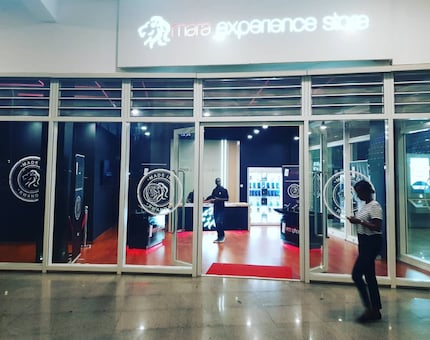
Youtube channel African Insider doesn't speak of a phone, but of «hope». John, who operates this channel dedicated to putting the African continent in a good light, has great hopes for the future of Mara and is proud of the initiative. The television station RwandaTV has even dedicated a one and a half hour special to the launch. The special is in Kinyarwanda, a local language, but the message is clear: Rwanda is proud. Mara phones are a big deal. The phone is «100% made in Africa».
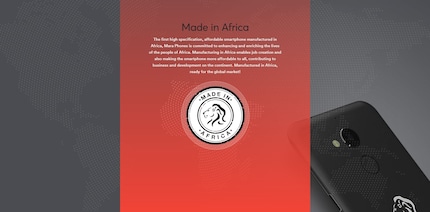
That's true. Almost.
We're forgetting two important terms: «Qualcomm Snapdragon» and «Mediatek».
Qualcomm is a Systems-on-a-Chip (SoC) manufacturer, this being the core component of every smartphone. The processor and graphics chip are usually found on an SoC. In other words: no SoC, no phone. Qualcomm is an American company that manufactures in China. Within hours of the Mara phone launch, the pro-government nationalist newspaper Global Times (环球时报) spoke up. Because while the Mara Z runs on a Snapdragon, its smaller sibling – the Mara X – runs on a Mediatek MT6739. MediaTek is a company based in Taiwan. China insists that Taiwan is part of China. Taiwanese citizens only agree with this to a limited extent. If Taiwan ever attempted to declare de jure independence, China would respond with implicit military intervention.
As far as journalist Xiao Xin of the Global Times is concerned, Taiwan is part of China. And he's proud of it as well. And when somebody comes along and claims that MediaTek SoCs are manufactured in Rwanda, then they have to be reprimanded.
For «Made in Africa» ambitions to materialize, the China story on achieving manufacturing excellence and building homegrown brands is worth reading. China's strong and established foothold in the African smartphone marketplace would supposedly contribute to Africa's smart-continent transition.
As a result, the Global Times likes to point out that Mara phones are overpriced, the market being dominated by low-cost Chinese brands such as Transsion anyway. Or by large brands such as Samsung, who also sell mobile phones for just under 100 dollars. Transsion, nearly unknown in Switzerland, is one of the most widespread smartphone brands in Africa. In 2017 Transsion has even dominated the market and sold the most phones in Africa. Transsion primarily sells phones in Africa under the Tecno brand, recently named the number 5 most respected brand among Africans in 25 nations by the London-based magazine African Business. After Nike, Adidas, Samsung and Coca Cola.
Arguing Mara's superiority over Transsion is therefore pretty hard. And even if that was the case, Mara would still actually be a Chinese product.
Due to this, Mara changed their statement from «100% made in Africa» to «100% manufactured in Africa». Something the company should have done from the beginning, as entering the market with such a bold-faced lie doesn't cast a particularly good light on a company that wants to win the favour of its customers.
The entire manufacturing process, from the motherboard all the way to the packaging of the phone is done in our newly-opened factory.
What Xiao Xin doesn't consider is that it isn't necessarily about the market dominance of Mara phones. With the launch of Mara phones, Africa wants to break away from being solely a consumer, building and developing its own products. Mara phones were made to take back a piece of their own continent. After all, even just the paragraph above mentions a Chinese newspaper, a Chinese company and an English magazine, all of which are on the African market, producing for the African market, and removing money from the continent. Because if someone in Kigali buys a Tecno-Phone, China makes money on it. Just like when you buy an iPhone in Switzerland, Apple makes money in Cupertino, USA.
But Xiao Xin of the Global Times is right about one statement:
Mara phones may represent national pride, but it remains a far distance from the phone vendor's commercial viability in the contested marketplace.
Mara is facing an uphill battle. In the lower price sector, manufacturers from all over the world are fighting for the favour of less well-off customers, or those who don't want to spend a lot of money on a smartphone. But every dollar that Mara earns in Africa or abroad is a dollar that returns into African coffers.
With Mara, Africa is creating a small domestic market. One phone after the other. This is what it's all about, not market dominance. But I don't think Mara would mind dominance either way.
But behind all the political and societal shenanigans, one fact remains: a 152 gram smartphone, the Mara Z. It's neat, but of course it can't compete with top dogs from Huawei, Samsung or Apple. In most cases, the phone operates more than adequately. The battery is small, but doesn't have to control anything really complex. That's the thing about Android. A smartphone with 12GB of RAM or more is nice to have, and certain things will run faster. But the fact remains, most apps are optimised for devices such as the Mara X or Z – there are only a handful of exceptions. Granted, Instagram may not load as fast and the IPS display isn't Amoled, but all in all the Mara Z is absolutely suitable for everyday use.
In Switzerland, getting a low-end device is a conscious choice. Yet in economically weaker areas of the planet, owning a smartphone can make all the difference to a career and success. And in this context, the Mara comes in handy. But the biggest sacrifice you'll have to make is with the camera. I attended a concert with «my Mara». As it turns out, a concert is something like the final boss for smartphone cameras. With a system camera, you set the shutter speed once when you're not shooting full-auto, just like with ISO and F-Stop. Smartphone cameras operate differently. As there are more algorithms involved, you can just point and shoot or film. The phone's computer along with the camera system dynamically adjust to light and sound. Both of these things sometimes change several times per second at a concert.
Therefore: the two videos below contain flashing lights. If you're photosensitive, maybe skip them. Sorry.
The Mara reaches its limits. The microphone starts clipping, the system can't cope with the lighting. Even if the Mara only films in 1920x1440, you'll notice the low specs.
It's an unfair comparison, but for illustrative purposes, I filmed the same concert with an iPhone 11 Pro Max, a smartphone that even professional filmmakers praise in Apple's demos. Director Steven Soderbergh (Ocean's Eleven, Traffic, Erin Brockovich) even filmed a complete movie on an iPhone back in 2018.
Although the image on the right-hand side of the billboard is a bit ragged and grainy, the microphone holds up and delivers impressive sound. And even in 4K, i.e. 3840x2160 pixels, and at 60fps, the iPhone won't falter.
When it comes to pictures, however, the Mara Z punches surprisingly far above its weight class.

The African phone captures the car well, even if it adds some rough textures in the shadowy background under the roof. Still, the picture is definitely suitable for social media. The skewed comparison earlier suddenly isn't that unfair if you overlook the fact that the Mara displays at 4160x3120 while the iPhone 11 Pro Max achieves 4032x3024. The Mara even performs better.
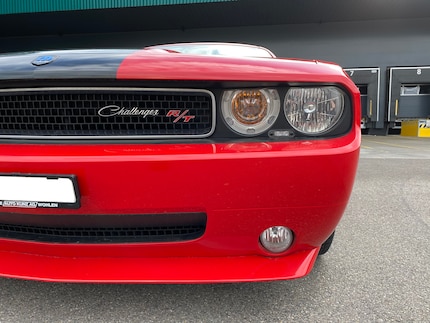
As expected, the iPhone has no problems with brightness levels. Maybe the comparison isn't so fair after all. But I still want to note how well the Mara performed. So let's move on to the next round. Let's try blurred images by adding macro. Neither the iPhone nor the Mara have a dedicated macro mode.
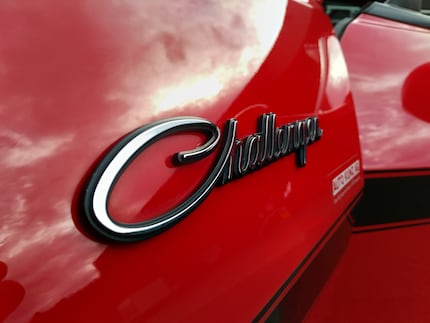
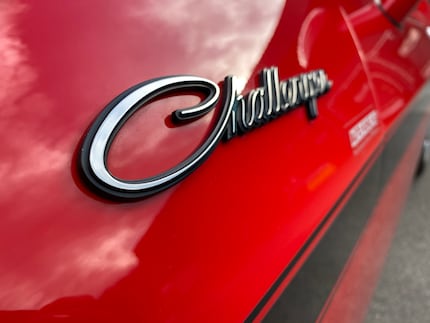
The iPhone wins. Nevertheless, the Mara is also suitable for everyday use, even though the lighting for the letter «C» appears much more dynamic on the iPhone, even taking into account the changing light conditions. Mara's depth of field also sets in quite late.
But I did notice one thing at the concert: constant filming impacts the battery. The Mara's 3075mAh battery drains quickly. But it can easily cope with a normal working day. Still, the iPhone keeps going even at 4K60fps. All thanks to clever hardware engineering. After all, software plays second fiddle in this imbalanced comparison. The Mara runs on Android One, so it's maintained and updated by Google. It only has to operate Google's program interfaces at the hardware level.
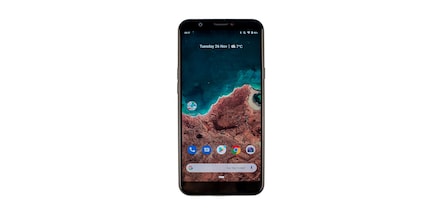
To make the comparison appear as unfair as possible: the iPhone 11 Pro Max costs well over 1000 Swiss francs and is a precisely built symphony of hardware and software. The Mara costs 200 Swiss francs and consists of cheap parts from China that manage as much as the budget allows. The Mara Z has one lens, the iPhone three.
But hey, the Mara does well with photos and can be proud of itself. Let's do a quick calculation. The Mara Z costs 229 US dollars. According to the current exchange rate, that's CHF 223.24. The iPhone 11 Pro Max costs 1359 francs, 6.09 times more than the Mara Z.
Here's a heretical question: are the pictures from the iPhone really 6.09 times better? We know that its images won't rival Apple, but the question is whether and how far Mara is punching above its own weight class.
Still, the Mara struggles with videos. There's no way around it. While you can simply add a «Volume Warning» to clips on social media, the Mara still doesn't produce really useful videos. In that aspect the iPhone is more than 6.09 times better. Any smartphone that ejects usable files is probably superior.
Let's end the unfair comparison there. As well as the review. After all, the Mara Z is cool. It's not a top phone, it can't be, but it doesn't want to be. But it's a strong statement. Africa is on the rise. Hopefully.
Technologically speaking, the Mara Z is a great and enjoyable device. So thanks, Mara.
Journalist. Author. Hacker. A storyteller searching for boundaries, secrets and taboos – putting the world to paper. Not because I can but because I can’t not.